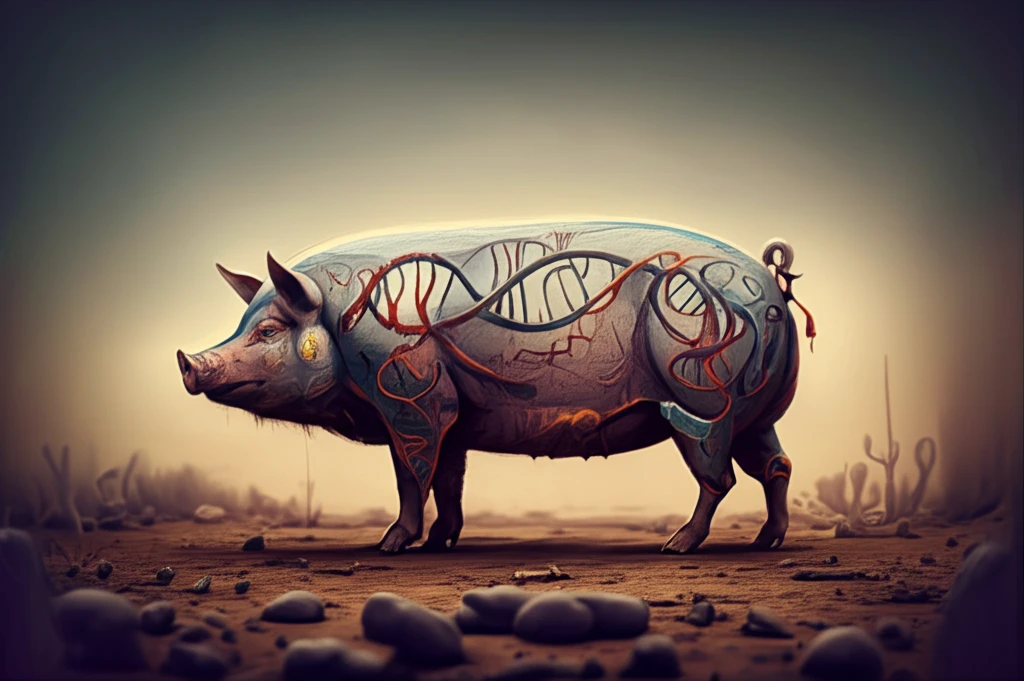
Unlocking the Secrets of Pork: How Genomic Interactions Shape Carcass Quality
"A deep dive into the hidden genetic conversations that determine leanness, fatness, and overall carcass characteristics in pigs, revealing new pathways for optimizing meat production."
For years, the pork industry has strived to improve the quality of meat through selective breeding, focusing on traits like leanness and fat distribution. While much progress has been made by identifying individual Quantitative Trait Loci (QTLs), the full picture of what determines a superior carcass has remained elusive. Now, cutting-edge research is shedding light on the complex interplay of genes and how they interact to influence the ultimate product.
A recent study published in the Journal of Animal Science delves into the world of 'epistasis'—the interaction of genes at different locations in the genome. Unlike simple additive genetic effects, epistasis reveals that certain traits aren't determined by single genes acting alone, but by genes working in concert, sometimes amplifying or negating each other's effects. Understanding these interactions can provide new targets for breeders looking to optimize carcass traits.
By analyzing a large, multi-generational pig population, scientists have uncovered novel epistatic QTL pairs affecting key carcass characteristics such as carcass cut weights, lean tissue content, and fat distribution. These findings not only deepen our understanding of the genetic architecture of pork quality but also suggest innovative strategies for more efficient and effective breeding programs.
The Epigenetic Landscape of Pork Production: Uncovering Novel Genomic Interactions

The researchers embarked on a comprehensive analysis of over 300 F2 generation pigs derived from a Pietrain sire line crossed with a crossbred dam line. These pigs were meticulously measured for various carcass composition traits at a standard slaughter weight of 140 kg. Genetic data was collected from 386 animals, genotyping them for 88 molecular markers strategically positioned across key chromosomes known to influence carcass traits.
- Significant Epistatic QTL Pairs: 23 significant epistatic QTL pairs were identified, highlighting the interconnected nature of the pig genome in determining carcass traits.
- Additive x Additive Interactions: The additive x additive genetic interaction emerged as the most common type, indicating that genes working together in an additive manner have a substantial impact on the final phenotype.
- Chromosomal Distribution: Epistatic QTL were found across nearly all chromosomes studied, underscoring that the complexity is spread throughout the genome.
- Phenotypic Variance: Epistatic QTL pairs accounted for a significant portion (between 5.8% and 10.2%) of the phenotypic variance, confirming that these interactions play a crucial role in the diversity of carcass traits.
The Next Frontier: Harnessing Epistasis for Better Pork Production
This study opens up new possibilities for enhancing pork production through strategic breeding programs. By identifying specific epistatic QTL pairs, breeders can potentially select animals that possess favorable combinations of genes, leading to improved carcass traits such as increased leanness, optimal fat distribution, and higher overall meat quality. While further research is needed to fully elucidate the mechanisms underlying these epistatic interactions, this study provides a valuable roadmap for future investigations and applications in the pork industry. Understanding how gene networks influence complex traits will help make pig breeding much more efficient and contribute to meeting the ever-increasing global demand for high-quality pork.
